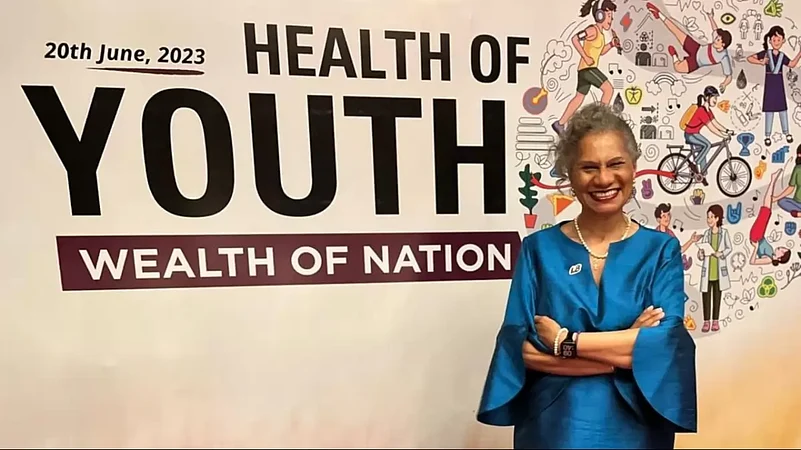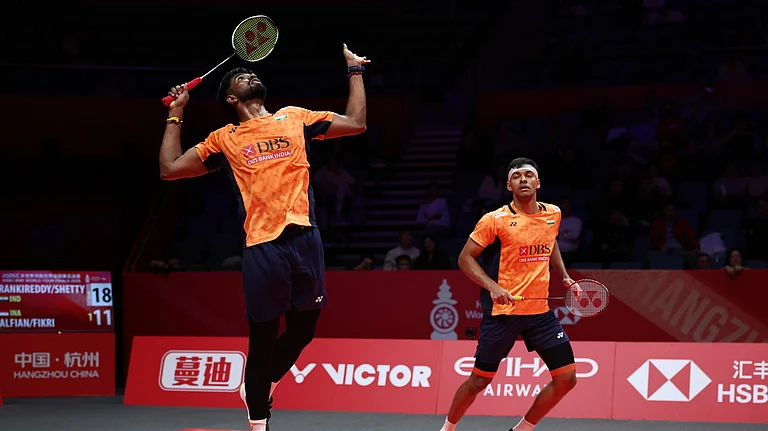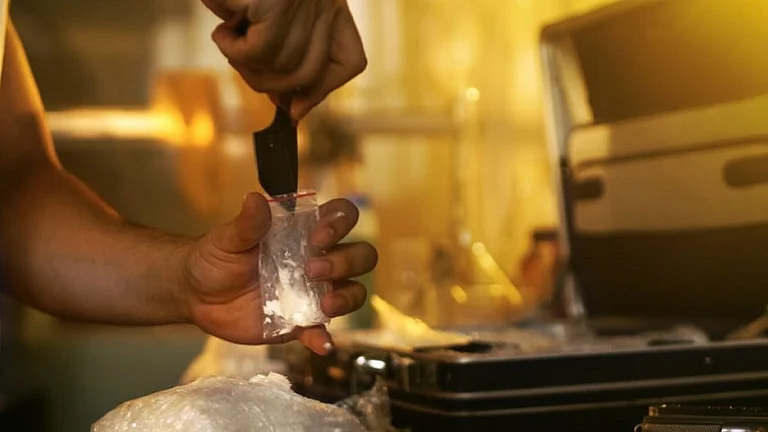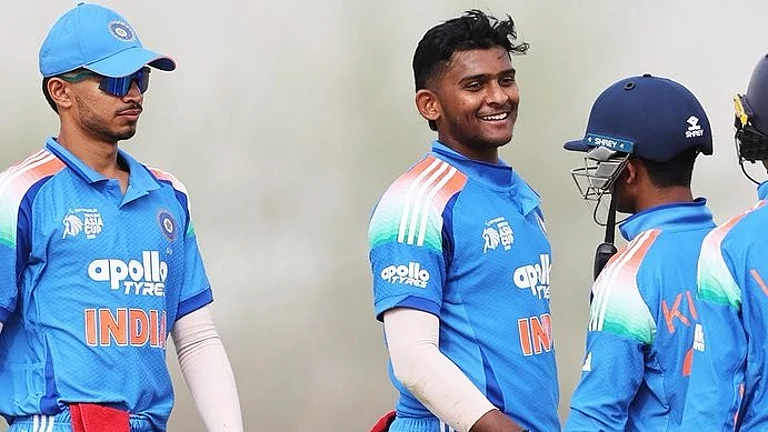With 253 million youths, India is experiencing a new social paradox. Can this youth bulge give rise to a demographic dividend? Or is it a liability? Dr. Julitta Onabanjo, the Director of the Technical Division, UNFPA, while exclusively talking to Outlook’s Abhik Bhattacharya says Education, Health and Wellbeing, Empowerment and Employability can bring foundational changes and turn the Indian youth population into a global asset. She also talks about adolescent health, gender disparity and access to quality healthcare.
Excerpts:
Welcome Dr. Julitta. Thanks for joining us. Before we start talking about the demographic and gender dividend, let us start with the challenges of adolescent people specifically in terms of health care. What are the major challenges we have in front of us? If you can start with that...
Thank you for having me. Young people everywhere are faced with great challenges, especially as the world rebuilds and recovers from the impact of COVID-19. And India has done well in terms of prioritizing adolescents' health. In the last few years, the Indian government has initiated large scale national adolescent health programmes such as Rashtriya Kishore Swasthya Karyakaram and School Health and Wellness programme which have put its youth population front and center of development.
With the largest young cohort that the world has seen, ensuring the commensurate and comprehensive investments in India’s youthful population including in their health is going to be key. In many countries, adolescent health needs are low priority as they are seen as less in need of support compared to child health and newborn survival. Additionally, socio-cultural norms limit access to information and services for young people, especially on matters of sexual and reproductive health.
A life course investment approach can ensure that investments start with the new-born, continue throughout early childhood development and support adolescent and youth health and wellbeing. This can facilitate the development of a strong workforce that help drives growth and prosperity. And the comprehensive investment equally benefit girls and boys and not lead to widening gender inequalities.
The fundamental inequality that many countries face in terms of gender and social norms does not help development. In fact, greater emphasis needs to be placed on girls as they face multi-dimensional constraints ranging from access to comprehensive health information and services and limited opportunities for meaningful employment.
We should therefore not only focus on the demographic dividend, we should also focus on the gender dividend. Long-term investment is needed to overcome these obstacles. I believe India is paving the way and can make a significant contribution to the global health and well-being of adolescents which will have a ripple effect in overall development.
Since independence, how do you think India has performed in terms of its healthcare services provided to its young people? Any major achievements that you want to talk about?
India has done so well on several fronts such as access to information and responsive health services especially, access to modern contraceptives, and counseling services for young people among many other accomplishments.
Globally, we have seen that young people’s healthcare needs are very unique, and their health-seeking behaviour is different from other community groups. They often seek information from social media and digital apps; they likely don’t want to stand in long queues at health facilities; and they routinely seek confidentiality. And this calls for innovation and technology-based approaches to meet their needs. The healthcare sector should be tailored to respond to such necessities. While doing so, India and all other countries need to consider its demographic transition as well. It is interesting that in some states, the bulge in the youth population age structure is large, and in others, the median age of the population is older.
Any positive aspect of such bulging...
The positive aspect of a youth bulge lies in the size of the workforce that becomes available and which can give rise to what we refer to as a demographic dividend. In India, the youthful human capital provides for a population that internally can migrate to other parts of India for work opportunities. This can promote cross-socio-cultural exchanges, integration and experiences.
Notably, in some parts of the world we are seeing population rates slow down and in some cases decline. This has implications for the future availability of a population workforce and countries may therefore consider attracting migration from other parts of the world to fulfil their workforce needs. Should that pull factor materialise it would be important that attention is paid to cooperation with other countries to secure the best international employment opportunities for young people from India.
As you are saying that such a youth bulge can be integrated and used as a crucial workforce, what are the ways to achieve it- to gain the demographic dividend? Can this 253 million youth of India be an asset?
Several countries that have seen such a significant youth bulge and invested as a priority in their youth have been able to reap economic benefits. The investments must prioritise the three ‘E’s to gain maximum demographic dividend. Education, Empowerment and Employment/Entrepreneurship.
If you elaborate on three ‘E’s for us...
If young people find themselves educated and skilled enough, not only for the present but for the future as well, there will be opportunities. We must also invest to educate and skill young people according to the needs of the global market. Again, I will stress on the education of the girl child, which is so important in terms of empowering her to exercise her rights and choices, and to facilitate countries to achieve the gender dividend.
The second part is empowerment. If you educate and ensure that young people are healthy without also creating spaces where their voices can be heard and they can engage meaningfully, it is likely to be counterproductive. We should create safe spaces for young people to actively participate in social-development discourses for the overall growth of society and the economy. They need to feel the power and agency to participate in democracy.
And third, is the creation of employment through meaningful job creation. I must commend India for its efforts in this regard.
The 3 E’s are foundational for good health. In the post-Covid context, the mental health of young people has also become a matter of concern that must be addressed and prioritized.
What can be done to uphold the sexual and reproductive health and rights of adolescent girls and young women?.
The most recent UN estimates on maternal mortality have highlighted that every two minutes a woman dies due to the complications that can arise with pregnancy and childbirth. A large factor that gives rise to this horrifying statistic is that sexual and reproductive health and rights - especially for women and adolescent girls - remain deprioritized and often overlooked.
Likewise, it is crucial that we build agency and bodily autonomy for adolescent girls and young women which is vital to ensure positive health outcomes throughout the life course. This calls for a multipronged approach including safeguarding access to comprehensive sexuality education in our communities, schools, and vocational training institutions. This will empower adolescent girls and young women to make informed choices and decisions about their sexual and reproductive health and well-being. This will also help young girls to avoid unwanted pregnancies, adopt safe menstrual hygiene and management practices, and stay in school.
What is the way forward to combat such embedded gender disparity?
Even after education, gender disparity will not go away if social norms are not addressed. We need governments, the private sector, faith-based organizations, civil society and international partners to continually work together to overcome the deep rooted and harmful social norms and practices. We need to also ensure that our programmes and policies focus on engaging boys and men as allies.
In many parts of the world societal and cultural structures are extremely patriarchal. Until and unless, we break down these structures, the power relations among genders will always hold full development, peace and prosperity back.



























